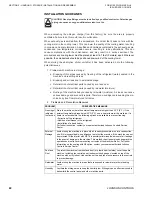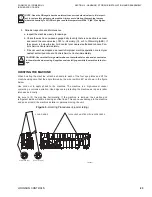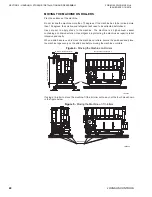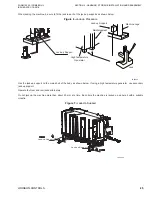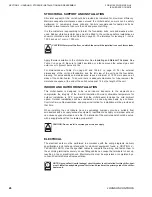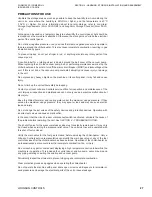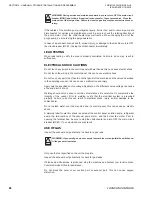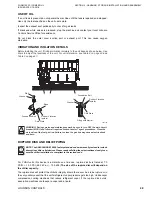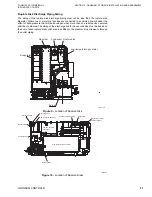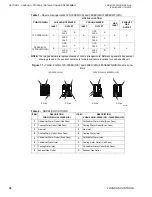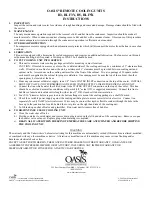
SECTION 3 - HANDLING, STORAGE, INSTALLATION AND REASSEMBLY
FORM 155.32-ICOM2.EN.UL
ISSUE DATE:1/10/2018
36
JOHNSON CONTROLS
HOT INSULATION/COLD INSULATION PROCEDURE
1. The recommended materials and their thickness for hot insulation/cold insulation are
shown in
2. Use a bonding agent, iron wire, iron band, or other tool used to fix the hot insulation/
cold insulation materials. Never rivet them. The use of welding pins is not recom-
mended.
3. Make the outer covering, flanged parts, and evaporator water chamber casing easily
removable to facilitate servicing.
4. The points that require hot insulation/cold insulation. See
.
5. The casing of the absorber/condenser water chamber does not require hot insulation/
cold insulation. If insulation is used, make it easily removable.
6. For the high temperature generator, install the insulation in a way to permit removing
the front, sides, and rear separately. In addition, make a removable part around the
rear end for inspection of the temperature relay and sensor.
Table 3 -
Insulating Material and Thickness
Table 4 -
Points Requiring Hot/Cold Insulation
Figure 15 -
Hot and Cold Insulation Details
HOT INSULATION
COLD INSULATION
Material
Rock wool or glass wool
Polyurethane foam, polystyrene foam, or glass wool
Thickness
2 inches
2 inches
POINT REQUIRING
HOT INSULATION
POINT REQUIRING
COLD INSULATION
POINT THAT MUST NOT
BE HEAT-INSULATED
High Temperature
Generator
Evaporator Shell
Sight Glass
Exhaust Gas Duct
Evaporator Water Chamber Case
Valve Manipulator
Heat Exchanger
Refrigerant Spray Piping
Pressure Gauge
Low Temperature
Generator
Refrigerant Blow Piping
Thermometer Insertion
Hole
Point Carrying “Hot
Insulation” Label
• Point Carrying “Cold Insulation” Label
• Valve for vacuuming (factory use only)
Relay Insertion Hole
LDxxxxx
LD26843
.UZOTY[RGZOUT
)URJOTY[RGZOUT
.=.KGZ+^INGTMKX
.=.KGZ+^INGTMKX
.=.KGZ+^INGTMKX

